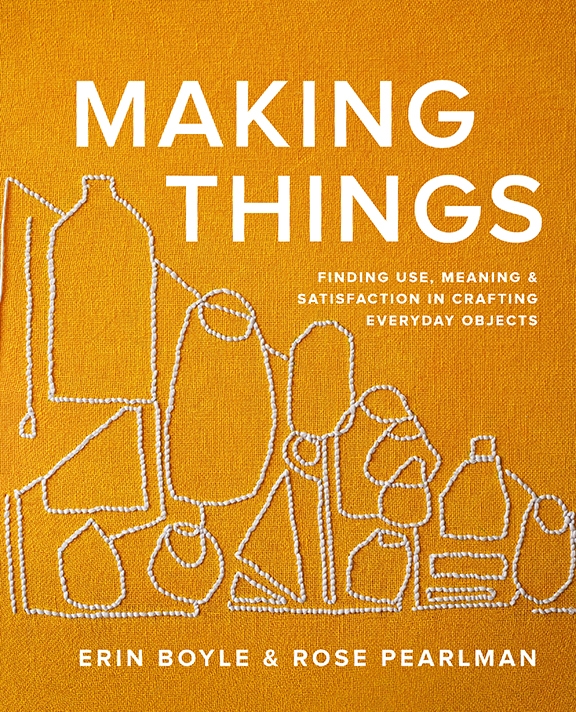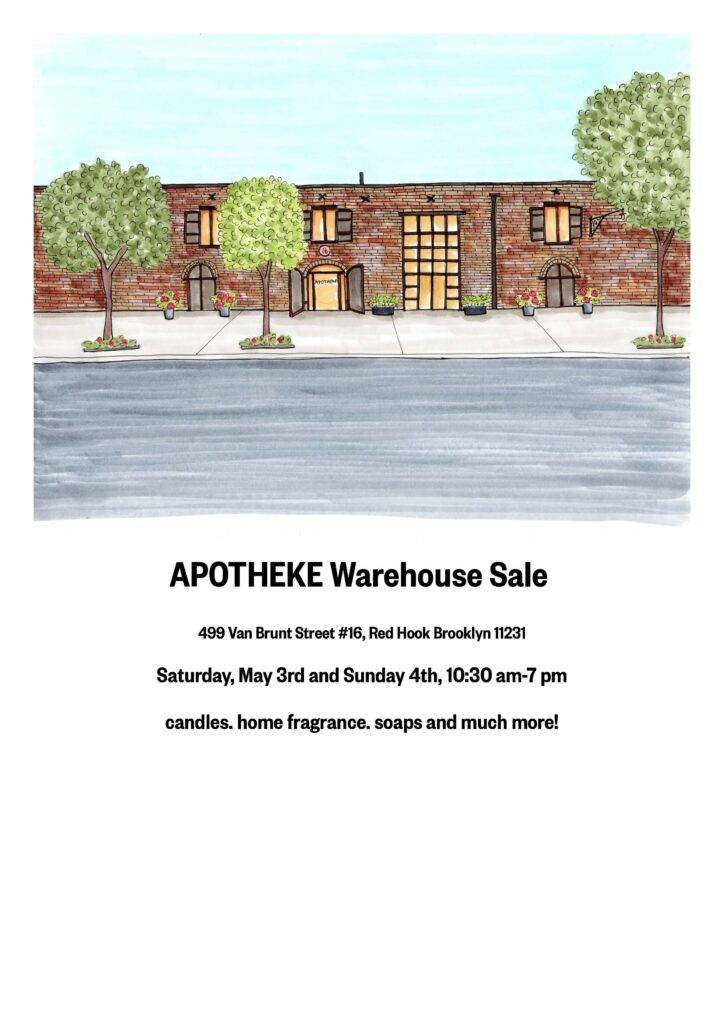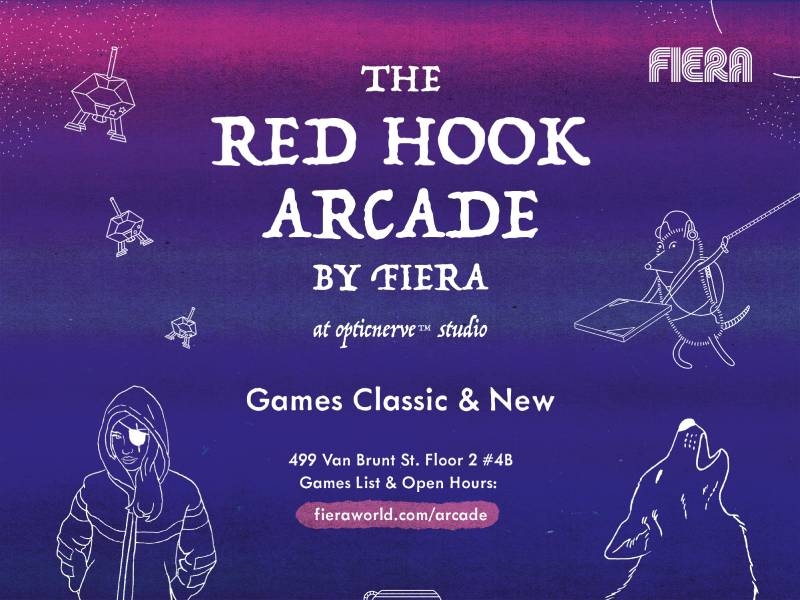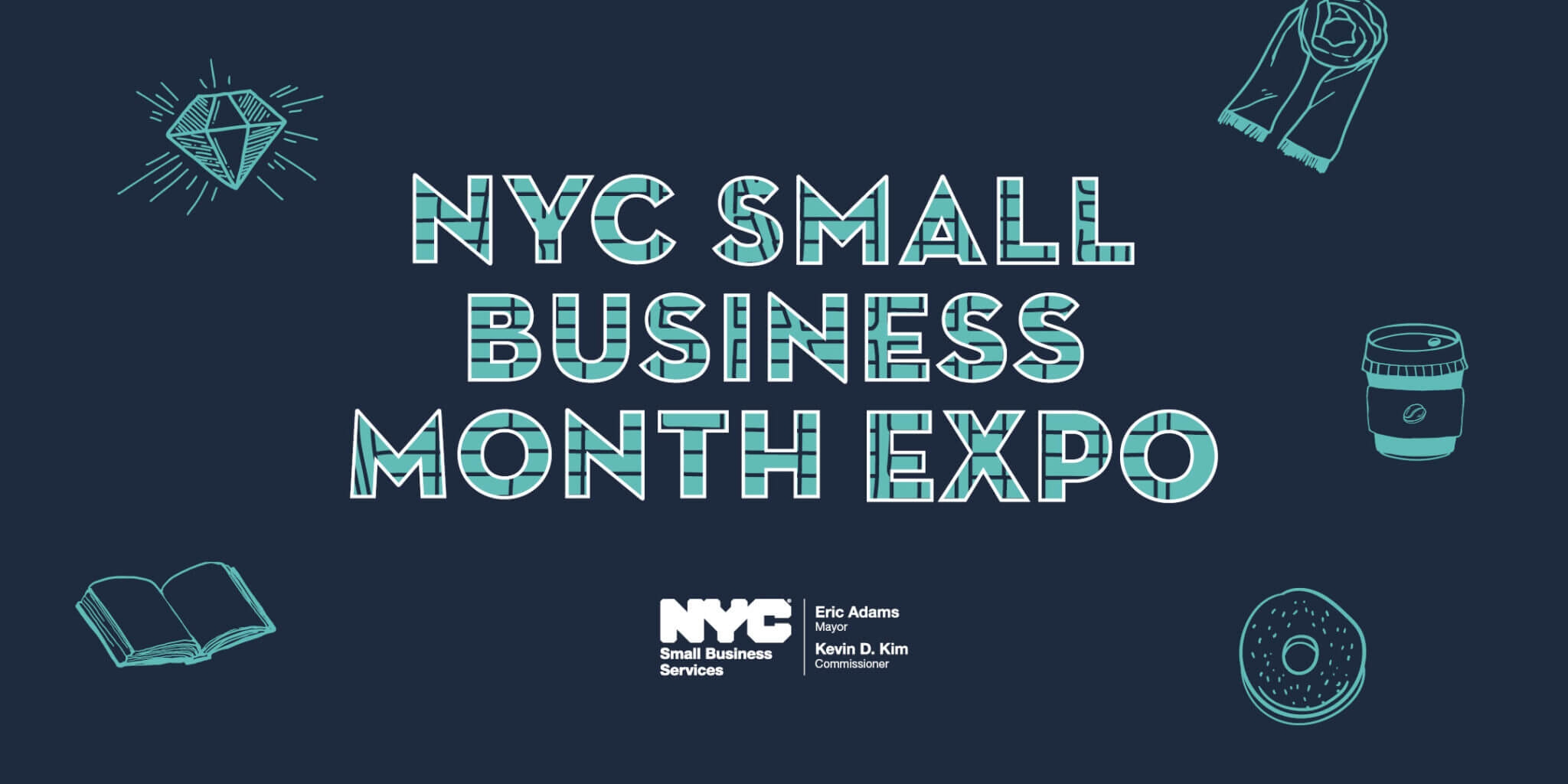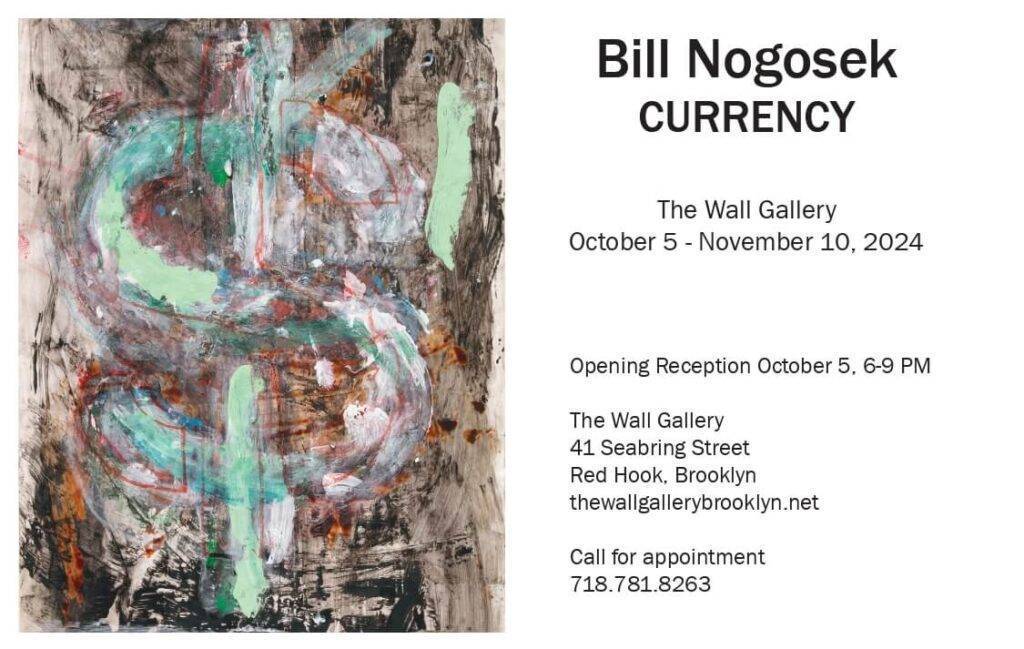As summer heat finally descends upon Brooklyn, it feels extra good to slow down and make everything a bit lighter—from your clothes to your decor. Just in time, two local artists, Rose Pearlman and Erin Boyle, have released a new book that leans into minimalism. Making Things: Finding Use, Meaning, and Satisfaction in Crafting Everyday Objects is a 300+ page hardback filled with simple, useful crafts coupled with whimsical narrative to draw readers in. The crafts and projects allow readers to gain a sense of ownership of their belongings by encouraging them to create basic items for themselves, often repurposing old items in the process. Projects include how to create a wide variety of practical items including a braided paper towel roll hanger, a twine and wool punched rug, and a basic knit scout scarf. To learn more about the book and the authors behind it, we asked Rose (an artist, teacher, and textile designer based in Prospect Heights) and Erin (a writer and photographer based in Carroll Gardens) a few questions about the book, their inspiration, and their creative processes.
How was the idea for this book formed? Was it an “aha” moment, or a frequent idea bounced between two friends that finally came into fruition?
A lot of the projects in this book are things that Rose has been making for more than twenty years. For the last six or seven years, both of us started working on these projects together and it made so much sense to put them all together into a great big book.
What did the writing, photography, and editing processes look like?
The two of us really worked on this book collaboratively. It was such an interesting and helpful thing, especially when thinking about writing instructions, to have two people with very different brains working on the same project. We were able to really complement each other and draw from both of our different experiences of making these crafts over and over again.
Did you learn anything unexpected through the writing and editing processes? A new craft idea, improved technique, or even some friendship wisdom.
It was so hard to know when to stop! The book is big—320 pages—and left to our own devices we probably would have made it even bigger. The projects in the book build on each other—and we really wanted readers to understand that one small technique could be applied to a whole range of other projects and that one small tweak could result in a whole different use. So yes, each time we made a project, it would trigger a new idea. Now that the book is published, that still happens. The more you make something, the more you understand it and see the ways that it could become something else.
As Brooklynites with a passion for crafting and sustainability, do you have any favorite local spots?
We adore Brooklyn General Store on Union Street. It’s just a treasure trove of the most beautiful yarns and textiles and notions. And of course we both lean heavily on our neighborhood hardware stores—for Erin that’s Mazzone’s right in Carroll Gardens.
You mention spending hours researching in the TATTER Textile Library in Gowanus. How did you find out about the library? What’s it like?
Blue The Tatter Textile Library is one of the most magical spots in Brooklyn. True to its name, it’s very blue and filled with books and objects related to textile crafts. There’s a big blue couch and a blue research table and rolling library ladders. It’s very special.
The book’s narrative highlights the importance of being curious about how things are made and the joy of problem-solving. Have you always been curious, problem-solvers, or were these attributes you’ve nurtured?
Curiosity and problem-solving are definitely things that have been nurtured in us in the course of our lives, but I think there’s an element of scrappiness and resourcefulness that comes from living frugally in a very expensive city. Brooklyn keeps us creative, for sure.
“Mastery is an ongoing process.” For many readers, especially those who don’t already craft often, a “failed” craft project can be deflating. What are some tips for not quitting?
We think it can be helpful to lower our expectations. It’s nice to make something that’s functional right off the bat—and we encourage folks to dive right in—but there’s also so much value in methodical, repetitive practice. No time spent making anything is wasted, it’s all just part of the sometimes-messy process.
Are there certain materials (e.g., gift bags, cereal boxes, toilet paper rolls) that you’re always particularly excited to turn into something new instead of tossing?
We have become self-proclaimed experts on sleuthing nice cardboard for crafting projects. Not all boxes are made alike and when we come across one that’s made from especially smooth and sturdy cardboard, we know to hang on to it.
Since the book launched in early May, you’ve hosted a lot of events in the neighborhood and beyond to promote it. Which projects/crafts have attendees been most excited to try?
Getting these projects into peoples’ hands is such a joy. It’s been so fun to be able to sit with folks while they work and to see the sense of pride and accomplishment they get from making things. We recently held a trivet workshop during a Community Dinner at Poppy’s HQ on Columbia Street and it was so great to get to see everyone’s work from start to finish.
If there is just one thing that each of us should master making, whether it’s to save money, live more sustainably, or just to easily beautify our spaces—what would it be?
We’re proponents of people getting started wherever they’re most comfortable. It’s great to start with something that you know you’ll finish successfully. This is different for different people, but for lots of folks, we’ve noticed they’re drawn to the functional origami boxes we include in the book. There’s something about turning a flat piece of paper into a useful three-dimensional object in about two minutes that gets people’s making-minds really going and once that starts, it’s hard to turn back off again.
Where can readers pick up a copy?
So many local independent bookshops are carrying Making Things and we’re so grateful. We held our pre-order campaign at Books Are Magic and they have lots of signed copies at both locations!
Are you planning any future projects together? How can readers continue to follow your work?
Hard to know what exactly the future might bring. Right now we’re just so excited that Making Things is out in the world! We’re both active on instagram (Erin is @readtealeaves and Rose is @rosepearlman) and Erin writes a regular newsletter on Substack called TEA NOTES.
The duo will be hosting crafting events and book signings throughout the summer, including a Flower Frog and Mini Knitting Loom Workshop on June 5 at Cardinal Gift Shop (Fort Greene), a wire basket making workshop on June 22 at TOAST Brooklyn (Boerum Hill), and an origami workshop on June 27 at A. Mano (Prospect Heights). Find the full list of events on readingmytealeaves.com.

